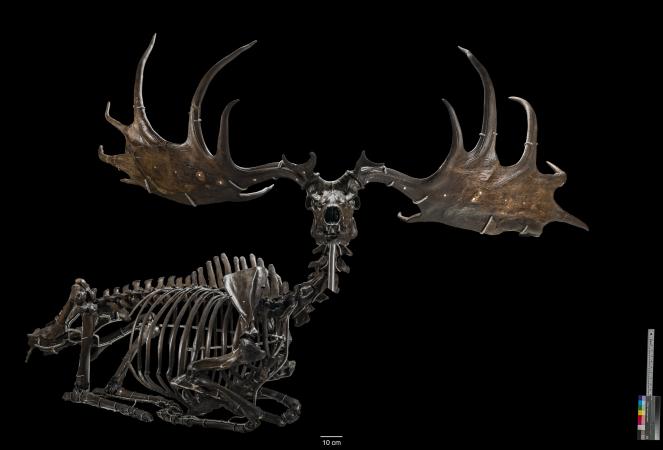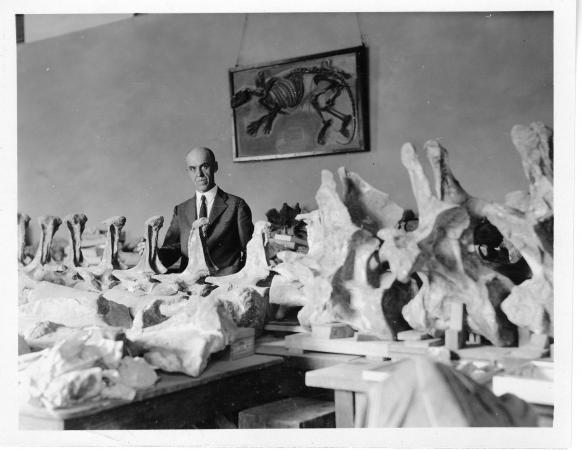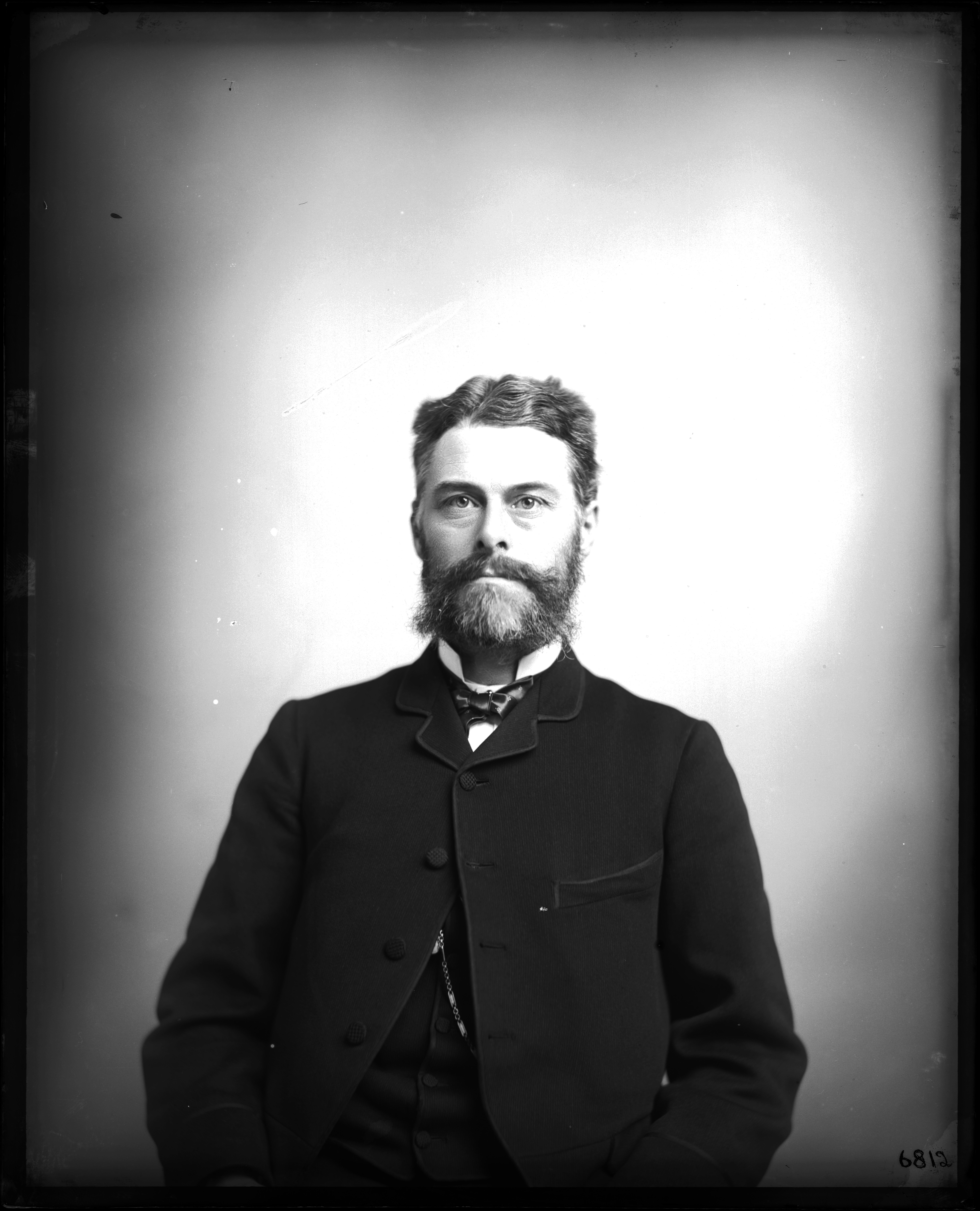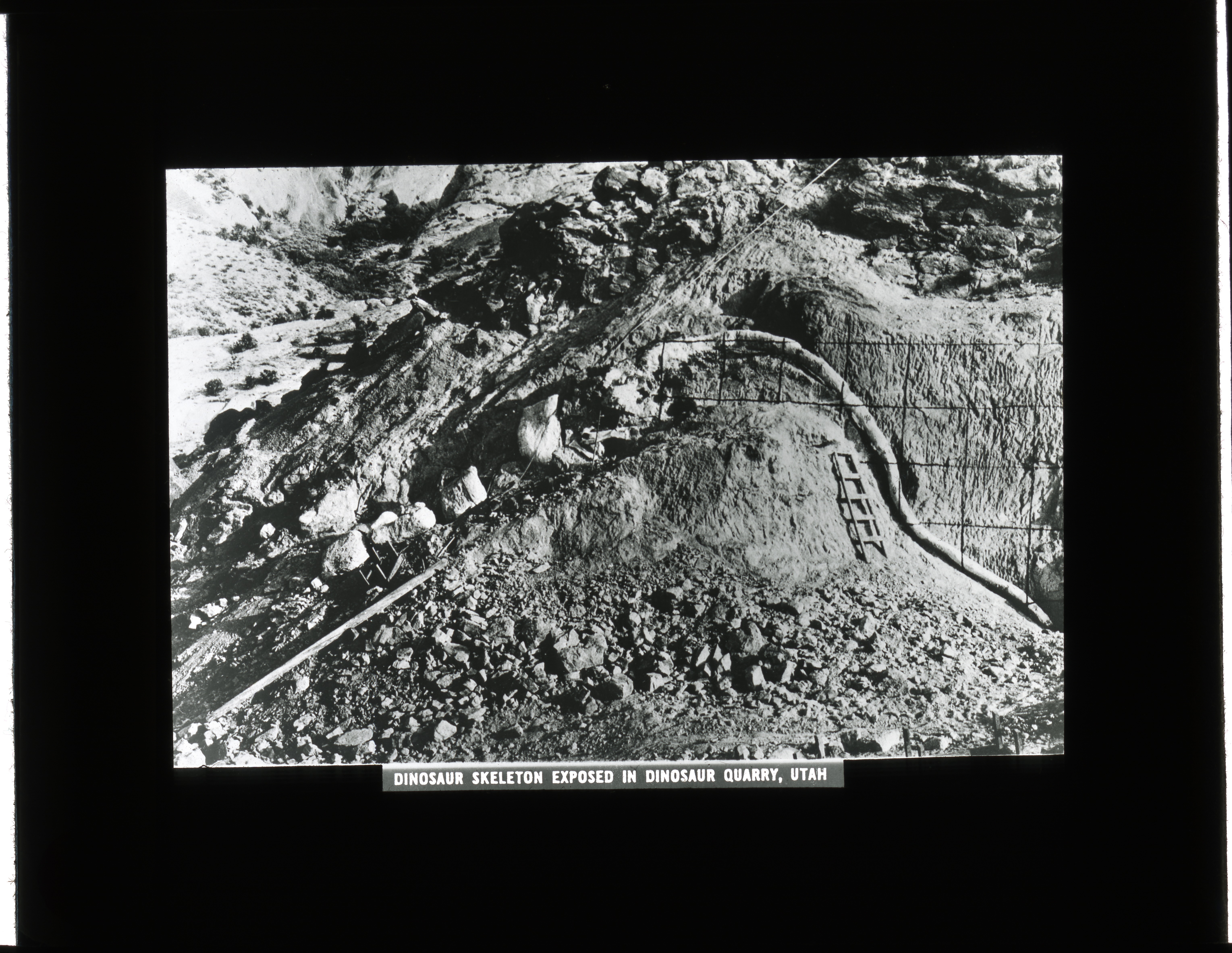Unless you’ve been living under a sedimentary rock, then you know that “Deep Time” is opening in the David H. Koch Hall of Fossils this Saturday, June 8 at Smithsonian’s National Museum of Natural History. And it’s nothing like you’ve ever seen before. The 31,000-square-foot fossil hall invites visitors to dive into Earth’s distant past to understand its connection to the present and future.
But before you head to the new exhibit, it might be interesting to learn about how the Smithsonian’s fossil collection formed and how it was initially exhibited. There’s drama. There’s adventure. There are menial administrative tasks!

Grab some popcorn, because the age of fossil discovery starts with drama. What had once been a friendship between paleontologists Othniel Charles Marsh and Edward Drinker Cope quickly turned into a bitter feud, now known as the “Bone Wars,” mostly over who would discover and name the most species.
Both Marsh and Cope sought to weaken the other’s reputation. The two splashed criticism of their rival’s work across American newspapers and journals and raided dig sites. And although these antics hindered some progress in the field, by the time Cope passed away in 1897, the two named more than fifty dinosaur species from fossils.
Now, dinosaurs really had the public’s attention.
Fortunately for the Smithsonian, Marsh became honorary head curator of the United States National Museum’s Department of Vertebrate Fossils in 1887, and assisted in facilitating the transfer of freight carloads of fossils to the museum from the United States Geological Survey. Upon Marsh’s death in 1899, another five railcars, consisting of eighty tons of fossils, were added to the collection. Marsh’s contributions remain Smithsonian’s largest single collection of fossils today.
Now let’s talk about the heroes tasked with sorting, cataloging, preparing, mounting, and studying these collections.
Charles W. Gilmore was hired alongside James W. Gidley to work as a preparator for the collection in 1903 under head curator George P. Merrill. Gilmore remained with the collection, eventually serving as curator of the Division of Vertebrate Paleontology, until his retirement in 1945.

In fact, you can spot a few of Gilmore’s projects in “Deep Time.” With the help of assistant preparator Norman H. Boss, Gilmore mounted and displayed “Hatcher,” the popular Triceratops, in the U.S. National Museum in 1905. Today, you can find Hatcher, posing as a snack for Tyrannosaurus rex, in the new exhibit. Additionally, Gilmore, Boss, Thomas Horne, and John Barrett were behind the preparation and mounting of the Diplodocus, the 70-foot-long, sauropod dinosaur, which was first displayed in 1931. It’s hard to miss this one in “Deep Time.” Hint: Look up!
As mentioned above, skeletons of extinct animals had been on display in the United States National Museum Building since 1872, but it was not until October 15, 1911 that the first hall of fossils, sometimes referred to as the “Hall of Extinct Monsters,” opened at the United States National Museum, now Smithsonian’s National Museum of Natural History building. Gilmore and his team arranged the dinosaurs by splashy, large fossil displays and smaller fossil bones or fragments.
What “Deep Time” and the “Hall of Extinct Monsters” have in common is that they each have clear messages, rooted in science.
In the 1910-11 annual report, Gilmore and his colleagues emphasized evolution, at a time when the theory was much more controversial. They explained that the fossils were systematically organized “to illustrate different phases of geological history and evolution of the several reptilian groups.”
The final section of “Deep Time” explicitly makes its mission clear. With panels, interactives, videos, and more, “Deep Time” demonstrates how humans are negatively impacting today’s species and affecting Earth’s future. One quote near the end of the exhibit sums this idea up well. "The evidence is clear: We are causing rapid, unprecedented change to our planet. But there is hope—we can adapt, innovate, and collaborate to leave a positive legacy.”
The David H. Koch Hall of Fossils opens to the public this Saturday, June 8 at Smithsonian’s National Museum of Natural History.
For a complete history of Smithsonian’s fossil halls, explore Extinct Monsters to Deep Time: Confict, Compromise, and the Making of Smithsonian’s Fossil Halls by Diana E. Marsh. The author relied heavily on Dr. Marsh's reasearch in writing this post.
Related Collections
- United States National Museum, Division of Vertebrate Paleontology, 1889-1957, Record Unit 156, Smithsonian Institution Archives
Related Resources
- David H. Koch Hall of Fossils—Deep Time, Smithsonian’s National Museum of Natural History
- Smithsonian’s National Museum of Natural History, History, Smithsonian Institution Archives
- “Charles W. Gilmore-The Forgotten Dinosaur Hunter,” by Hans-Dieter Sues and Diana Marsh, National Museum of Natural History
- “This Means War! A History of the Bone Wars,” by Clare Flemming, Biodiversity Heritage Library Blog
- “The Doctor Is In, a #DeepTime Series. Episode 1,” Smithsonian’s National Museum of Natural History, YouTube Channel
Produced by the Smithsonian Institution Archives. For copyright questions, please see the Terms of Use.






Leave a Comment